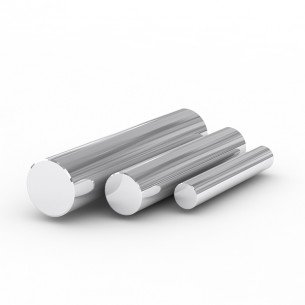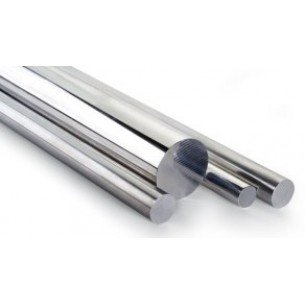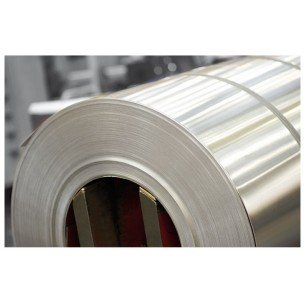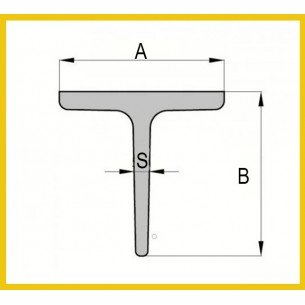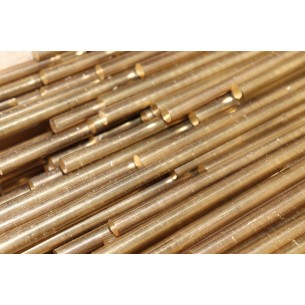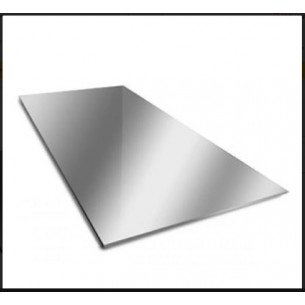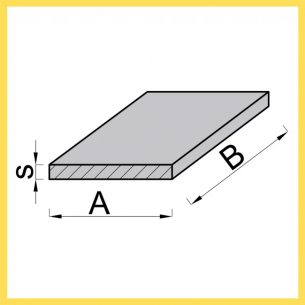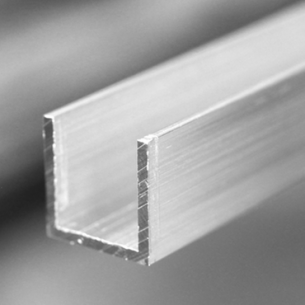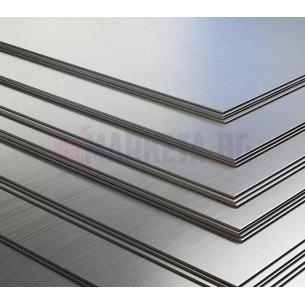Model: П-профил 20мм 20х20х2.0
* The aluminum profiles we offer are 6m long. ! ** The indicated price is for 1 pc. profile, 6m long. ! *** The profile can be cut to your liking. There is no additional charge for this service. You can place your order directly through our online store: fast, convenient and easy, or order by email ..
42.00 лв.
Ex Tax:42.00 лв.
Model: Алуминиеви пръти
What is aluminum rod? Nowadays, several types of aluminum rods are produced. They can be round, square or hexagonal in shape. This variety means that the rods can be used as an independent part in any structure, they can give originality to its appearance. Application of the aluminum rods The alumin..
0.00 лв.
Ex Tax:0.00 лв.
Model: Алуминиева лента
Aluminum strips Aluminum strip is considered one of the derivatives of the steel industry . It is widely used in various industries, not only in industry but also in home use. Thanks to its high operational characteristics, for example - reliability and high electrical resistance, the aluminum stri..
0.00 лв.
Ex Tax:0.00 лв.
Model: Т-профил 20х20х1.5
* The aluminum profiles we offer are 6m long. ! ** The indicated price is for 1 pc. profile, 6m long. ! You can find high- quality T-shaped profiles in stock in Sofia in the warehouse of Smart Metal Group EOOD . Metal profiles have a variety of industrial and engineering applications. T-shaped profi..
27.78 лв.
Ex Tax:27.78 лв.
Model: Месингов прът 8.5мм
Brass Rods with demensions:Lenght - 3 metersDiameter - 8.5..
19.80 лв.
Ex Tax:19.80 лв.
Model: Помеднена заваръчна тел
Introducing our premium Copper Welding Wire, a superior choice for all your welding needs. Crafted with precision and designed for excellence, this welding wire offers exceptional performance and reliability.Our Copper Welding Wire is meticulously manufactured using high-quality copper, ensuring exc..
81.60 лв.
Ex Tax:81.60 лв.
Model: Неръждаема ламарина
Stainless steel sheet metal is one of the most popular
products made from this material. Sheet metal is made from both cold and
hot-rolled sheets. Cold-rolled sheets can have a thickness of 0.4 to 5 mm. The
thickness of hot-rolled sheets can vary between 2 and 50 mm.Area of application of stain..
136.80 лв.
Ex Tax:136.80 лв.
Model: Алуминиев лист 1.50/1000/2000 мм рифел
..
0.00 лв.
Ex Tax:0.00 лв.
Model: Алуминиев лист 3/1000/2000 мм рифел
..
0.00 лв.
Ex Tax:0.00 лв.
Model: П-профил 10мм 215х14х1.5
..
36.88 лв.
Ex Tax:36.88 лв.
Model: П-профил 16мм 20х20х2.0
..
30.95 лв. 44.22 лв.
Ex Tax:30.95 лв.
Model: П-профил 20 мм 20х24х20
..
44.92 лв.
Ex Tax:44.92 лв.
Model: Т-профил - Бял 25х25х1.5
..
35.04 лв.
Ex Tax:35.04 лв.
Model: Т-профил 30х30х1.5
..
42.30 лв.
Ex Tax:42.30 лв.
Model: ALL1001
Aluminum sheet is a versatile and convenient material that is used in various branches of modern industry, especially in construction, where it can successfully solve the most complex tasks, while ensuring maximum reliability in the implementation of its construction projects. Aluminum sheet is used..
0.00 лв.
Ex Tax:0.00 лв.Showing 1 to 15 of 15 (1 Pages)

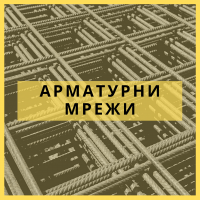
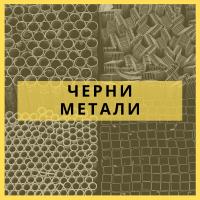





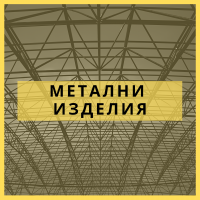



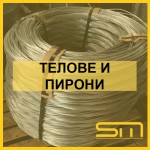

-150x150.png)





































